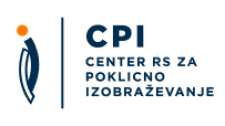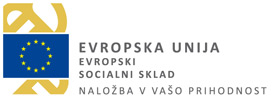Archived
Kozmetik/kozmetičarka
Selected qualifications
| Name of qualification | Name of qualification: Kozmetik/kozmetičarkaAdd to comparison |
|---|---|
| Translated title (no legal status) | Translated title: Cosmetician |
| Type of qualification | Type of qualification: Short cycle higher vocational diploma |
| Category of qualification | Category of qualification: Educational Qualification |
| Type of education | Type of education: Short cycle higher vocational education |
| Duration |
Duration of education:
2 years
|
| Credits | Credits: 120 credits |
| Admission requirements |
Entry conditions:
|
| ISCED field |
Field:
Services
|
| ISCED subfield | subfield: hair and beauty services |
| Qualification level |
SQF Level:
SQF 6 |
Students will be able to:
(general competences)
- communicate and use information and communication technology for effective support of the work and management of documentation and information,
- communicate with co-workers, experts and customers,
- use Slovene and a foreign language for effective and clear oral and written communication with all users in their working environment,
- participate in an expert team,
- work in a manner that promotes a healthy lifestyle,
- protect health and the environment,
- demonstrate understanding of cultural diversity,
- think analytically and creatively in order to make decisions autonomously and solve cosmetic problems through the flexible application of knowledge in practice,
- show self-initiative and express new ideas, adapt to new situations, show initiative in work and an orientation towards self-evaluation and the constant improvement of own work,
- set own goals, plan and monitor own work and the work of others, and work in a team,
- take responsibility for the quality and success of work performed and promote the transfer of knowledge,
- develop entrepreneurial characteristics, skills and behaviour,
- plan human resources, be responsible for the education and training of personnel and plan the organisation of internal education and training,
- make rational use of energy, material and time,
- demonstrate ethical behaviour,
- take responsibility for self-directed learning and lifelong learning based on critical and ethical reflection on own thinking and actions,
(vocational-specific competences)
- demonstrate familiarity with and understanding of cosmetic problems,
- autonomously plan and provide cosmetic skincare or care for changed conditions of skin,
- keep abreast of development trends in the cosmetics and healthy lifestyle fields,
- plan and implement the provision of guidance and advice in the cosmetics sector,
- provide advice about a healthy lifestyle and well-being, with an emphasis on the fields of healthy diet, physical and mental activity and personal relaxation,
- carry out project-based work in the cosmetics and healthy lifestyle fields,
- undertake marketing of cosmetic products,
- supervise the work of an expert team and organise work in the cosmetic care and healthy lifestyle sector,
- provide and participate in formal and informal forms of training and advanced training,
- ensure the quality of work processes in the cosmetics sector,
- use more complex state-of-the-art devices in cosmetics,
- use aromatherapy in cosmetics,
- perform special pedicure techniques,
- perform various massage techniques and alternative forms of massage.
Students may progress to the second year if they have successfully completed first-year modules, subjects and practical training (including practical classes, seminar papers, projects, examinations, etc.) totalling at least 45 credits, where all practical classes and practical training course units must be completed in full.
Kozmetik/kozmetičarka
SQF 6
EQF 5
The Career path tab shows the possible career path within the selected qualification area, which is not the only one and is not mandatory. The actual transition between qualifications, which is determined by law, is defined in the Transition tab.
SQF 7 / EQF 6
SQF 8 / EQF 7
First-cycle study programmes (SQF, level 7)
Qualification description
 A short description
A short description
Cosmetician
When a client enters a beauty salon the cosmetician kindly welcomes her/him, consults with her/him about the service, prepares her/him for care taking place and selects and prepares the appropriate cosmetic preparations for face and body care.
 What a worker usually does
What a worker usually does
The work of a cosmetician is diverse. It includes cosmetic care of the whole body: facial and body care, waxing and epilation, makeup, lymphatic drainage and massage with alternative massage techniques, pedicure, manicure and reflexive foot massage. The cosmetician also organizes and controls other treatments for better well-being and appearance, such as Turkish baths, saunas, steam baths and tanning beds.
Because she/he performs cosmetic care procedures on the human body, she/he performs her/his work with as much responsibility as possible, so a cosmetician must be well-trained and accurate. When entering a beauty salon, the cosmetician kindly welcomes the client, consults with her/him about the service and keeps records of the services provided. She/He prepares the client for care: selects and prepares the appropriate cosmetic preparations for face and body care.
With the peeling method the cosmetician first removes impurities from the surface of the skin on the face or body. She/He massages the clients face and body with various techniques and performs waxing, which is the temporary removal of excess hair across the face and body with the help of waxes and resins. Applies masks and wraps to the face and body with various nourishing effects. At work, the cosmetician uses cosmetic face and body care appliances that supplement cosmetic care with electricity, heat, steam and light rays. The cosmetician carefully arranges the clients hands and performs a manicure. Nourishes, shortens and shapes nails. Optionally, she/he applies and shapes artificial nails and decorates the nails by painting them. In foot care, the pedicure, the cosmetician shortens and shapes the toe nails, removes corns and scabs. Nourishes ingrown nails and manufactures and installs corrective aids to maintain the best foot function. The cosmetician advises the clients to choose the right footwear and proposes exercises to strengthen the foot muscles.
The cosmetician permanently removes excess hair on the face and body with waxing devices.
At the client's request, applies permanent makeup. She/He performs masquerade services by applying daily make-up, arranging clients for special occasions (e.g. for wedding or prom) and photo sessions, provides makeup for actors and other performers, e.g. models, forecasters and anchormen. She/He advises the client on which cosmetics to use and how to nourish their face and body while also reminding them of the importance of a healthy diet.
In order to complete the programme, students must complete all course units (examinations, practical classes, seminar assignments, etc.), as follows: all compulsory modules and subjects, for a total of 95 credits, one elective module consisting of 15 credits, a freely elective subject consisting of 5 credits and a diploma thesis (worth 5 credits).
Higher vocational colleges
URL
Awarding body URL:Upcoming event
International Conference: 10 years of Slovenian Qualifications Framework
International Conference: 10 years of Slovenian Qualifications Framework Brdo Congress Centre, Predoslje 39, 4000...
© Center RS za poklicno izobraževanje, 2018. All rights reserved
Sitemap General legal notice Cookie Policy Production: ENKI






